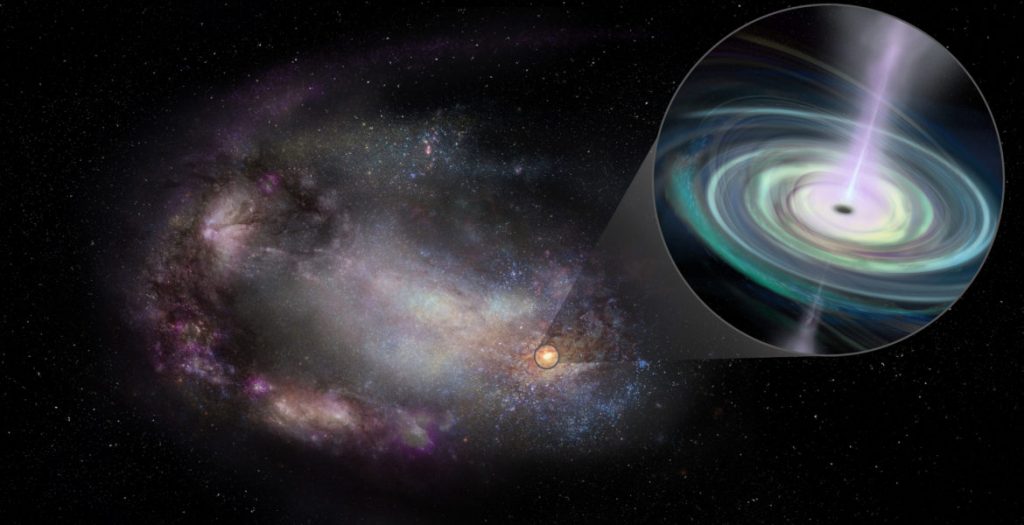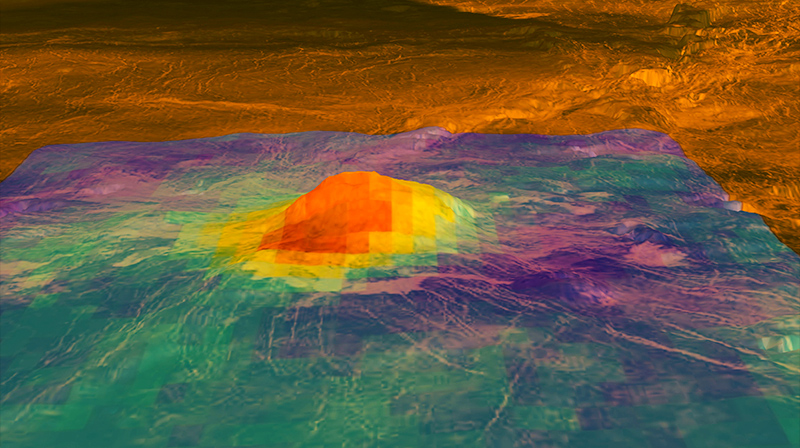The Hubble Space Telescope continues to give us amazing views and science, 30 years later. Here are a couple of new stories that help us appreciate this amazing tool of science.
This week is the 235th meeting of the American Astronomical Society. Held in Honolulu Hawaii, this meeting is giving some of our team a chance to interact with the people making the news… while others of us are left behind to keep everything going here at CosmoQuest. Due to time zone differences, today’s Daily Space is built on some of yesterday’s press releases, as new news isn’t being released until after we have recorded this episode.

- Hubble Surveys Gigantic Galaxy (Hubble Space Telescope)
One of the things that punctuated a lot of yesterday’s science is the 30th anniversary of the launch of the Hubble Space Telescope. In April of 1990, Hubble lifted off on a mission of discovery that would start with the discovery that it’s mirror had been misground to the focal length. This was eventually fixed with a corrector, and in the years and decades since, Hubble has gone on to play a major role in every area of astronomy and space science.
Hubble was launched with a few key areas of research planned: For instance, it was going to solve the mystery of planetary nebulae morphologies and (we thought) measure the Hubble Constant. Other topics we didn’t foresee. As was pointed out at the AAS meeting by Nikole Lewis, exoplanets were only discovered 25 years ago, Hubble was built without planning to handle exoplanets, but has proven really useful for advancing this super new area of science.
And other missions have come to rely on Hubble. For instance, HST found objects for New Horizons to visit after Pluto, followed up on systems for Kepler, and so much more all across planetary . The longevity of Hubble allows us to get fairly consistent images over decades, which is long enough to see evolution, and determine norms and unusual behaviors of outer world’s atmospheres.
In Astrophysics, it has worked in concert with Spitzer, Fermi, and Chandra to help us explore our universe all across the electromagnetic spectrum. We’ll be hitting on some of those stories later in this episode.
As we reflect on what Hubble has done, we can also look forward to something that in the early 2000s we didn’t think could happen: It looks like JWST and HST may be in orbit at the same time and able to support one another in joint science operations. According to Jennifer Wiseman, NASA agreed to fund Hubble as long as it is functional and Heidi Hammel reports it has 3 very functional batteries and 3 high quality gyroscopes. HST should go on working for years to maybe even decades to come.
The first day of AAS, like so many other days, included new science results from Hubble. In a new set of images taken for Benne Holwerda of the University of Louisville, astronomers are able to explore the origins of the largest spiral galaxy seen to date. With ten times more stars than our galaxy, this system is 2.5 times the size of the Milky Way in diameter, and appears to be as large as a spiral galaxy can possibly become. These images show that this system, UGC 2885, is isolated and seems to slowly be consuming new gas from the space between galaxies. With half the star formation rate of our own galaxy, this is a quiet system that isn’t experiencing the same rapid consumption of dwarf galaxies we see here at home. Further study with the JWST is going to be required to fully understand this system, but the Hubble images provide us a great starting point. Click to dailyspace.org to see these images.

Hubble wasn’t the only senior telescope playing a major role in this week’s news. We also saw results from the Very Large Array, or VLA, that demonstrate that while our human mind would like all black holes to lurk in the centers of galaxies, this isn’t always true. In the past, software models had shown that super massive black holes in dwarf galaxies can exist in the places that aren’t the center. Now, these results have also been seen in the sky. In a study of 111 dwarf systems located a billion light years from our galaxy, 13 of the systems were found to have an off-center supermassive black hole. According to the press release, “The scientists said this indicates that the galaxies likely have merged with others earlier in their history. This is consistent with computer simulations predicting that roughly half of the massive black holes in dwarf galaxies will be found wandering in the outskirts of their galaxies.”

Our final story of the day doesn’t actually come from AAS, but it is too cool to ignore. In a new release from the Universities Space Research Association, researchers find evidence that volcanic flows observed by Venus Express may be evidence of ongoing volcanism on this deadly world. In a paper led by Justin Filiberto, researchers describe how they recreated Venus’ hot caustic atmosphere in the laboratory to investigate how minerals in lava, like Olivene, change over time. Starting with fresh minerals, such as would be in lava flows, the measured how over time the minerals becomes coated with the iron oxide minerals magnetite and hematite. They found that to understand Venus Express’ results, lava flows would need to be young – young enough that Venus may have active volcanoes still erupting. This changes how we see Venus, and gives us more reason to return with resilient probes that are able to get beneath the clouds and show us what geophysics waits to be explored.
<———————>
And that rounds out our show for today.
Thank you all for listening. The Daily Space is produced by Susie Murph, and is a product of the Planetary Science Institute, a 501(c)3 non profit dedicated to exploring our Solar System and beyond. We are here thanks to the generous contributions of people like you. Want to become a supporter of the show? Check us out at Patreon.com/cosmoquestx
Each live episode of the Daily Space is archived on YouTube. If you miss an episode on Twitch.tv, you can find it later on youtube.com/c/cosmoquest. These episodes are edited and produced by Susie Murph.
We are here thanks to the generous contributions of people like you who allow us to pay our staff a living wage. Every bit, every sub, and every dollar committed on Patreon.com/cosmoquestx really helps. If you can’t give financially, we really do understand, and there are other ways you can help our programs. Right now, the best way you can help is to get the word out. Let your friends know, share our channel to your social media, or leave a recommendation. You never know what doors you are opening.


 We record most shows live, on Twitch. Follow us today to get alerts when we go live.
We record most shows live, on Twitch. Follow us today to get alerts when we go live.